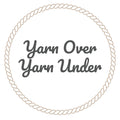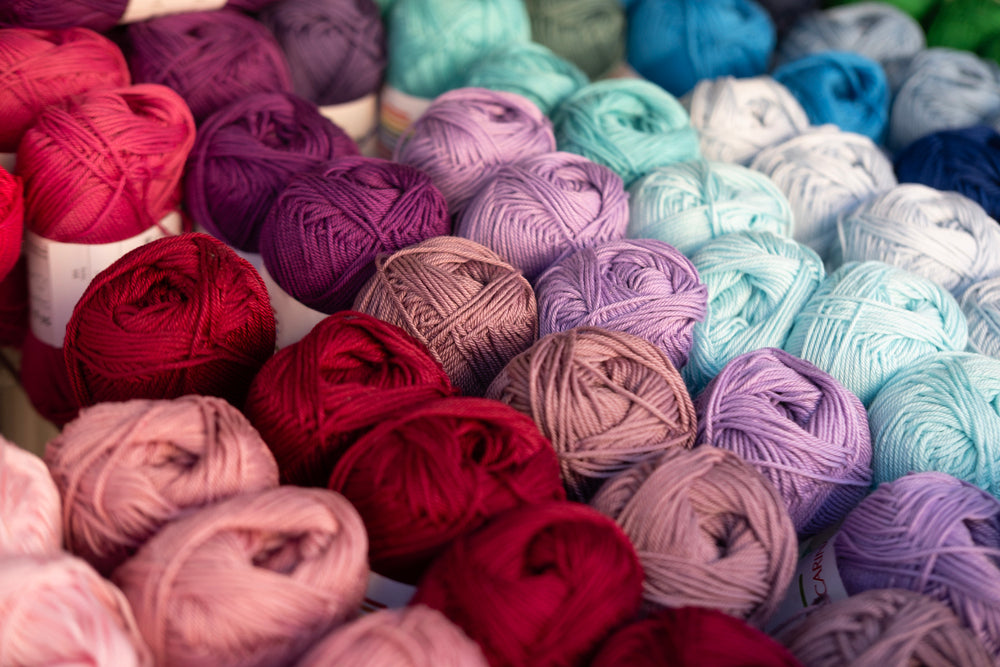Let's talk yarn weights, shall we? No, we’re not about to bench press a skein, but we are diving into the world of yarn thicknesses and why it matters. Whether you're new to crochet, knitting, or just a yarn enthusiast who likes to squish skeins for fun (no judgment), understanding yarn weights can make all the difference when starting your next project. So, grab a cup of tea, your favourite hook or needles, and let’s untangle this yarn-weight business.
What Are Yarn Weights, Anyway?
In the simplest terms, yarn weight refers to the thickness of the yarn strand. It ranges from super fine (basically thread) to super chunky (think blanket-sized). Yarn weights are standardised, so you’ll find numbers and names like 0 (Lace) all the way up to 7 (Jumbo). These weights help you figure out which yarn will work best for your project and match up with the pattern's recommended size.
Common Yarn Weights (And When to Use Them)
Let’s break down the most common yarn weights and give you some ideas for when to whip them out.
0 – Lace Weight
Lace weight yarn is super fine, almost thread-like. It’s perfect for delicate projects like lace shawls, doilies, or fancy, airy scarves that’ll make you feel like you’re living in a Victorian novel. Lace weight might not be the best for beginners, though, because it’s… well, let’s just say it’s fiddly. But if you’re ready to dive into fine detail and patience-testing projects, lace weight yarn might just be your new best friend.
1 – Super Fine (Fingering)
This yarn weight is often used for socks, lightweight shawls, and baby clothes. Super fine yarn (also called fingering or sock yarn) is thin enough to make intricate patterns but thick enough that you won't lose your sanity. It’s a great choice if you want something more lightweight but still manageable.
2 – Fine (Sport Weight)
Fine or sport weight yarn is a little thicker and is often used for light sweaters, socks, and children’s wear. It works up quickly without being too bulky, making it perfect for projects that need to be soft and flexible. Plus, if you’re making something for little ones, the thinner yarn keeps things light and comfortable.
3 – Light (DK or Double Knit)
Lightweight yarn, also known as DK (Double Knit), is a versatile weight that sits in the middle of the pack. It’s great for cardigans, baby blankets, and even amigurumi. You’ll find it easier to work with than lace or fingering yarn, but it’s still light enough to keep your projects from feeling too heavy. This is a perfect go-to yarn weight for anyone who likes to mix things up.
4 – Medium (Worsted, Aran)
Now we’re getting into worsted weight (or Aran), which is probably one of the most popular yarn weights out there. It’s perfect for almost everything—blankets, scarves, sweaters, and yes, even amigurumi. If you’re new to the yarn game, this is a great starting point. Worsted weight yarn works up fast and is easy to handle, so your projects come together quicker than you can say, “Just one more row.”
5 – Bulky (Chunky)
Bulky yarn, also known as chunky yarn, is where things start getting extra cozy. This thicker yarn is perfect for warm blankets, amigurumi toy plushies, cuddly hats, squishy cowls, and chunky sweaters that feel like a big hug. Projects made with bulky yarn work up in no time because the stitches are larger and more visible. Great for those “I need a handmade gift, like, yesterday” moments.
6 – Super Bulky
If bulky yarn is cozy, then super bulky yarn is basically a giant hug. Perfect for super thick blankets, chunky scarves, and oversized cushions, this yarn weight makes a big impact. The thick stitches mean you can make a blanket in a weekend (seriously, try it!). If instant gratification is your thing, super bulky is where it’s at.
7 – Jumbo
We’ve reached the final frontier: jumbo yarn. Think arm knitting, massive blankets, and super squishy pet beds. Jumbo yarn is thick enough that you can work it up with your hands—no hooks or needles needed. It’s definitely a fun weight to play with, especially if you want to create a big, bold statement piece.
Choosing the Right Yarn Weight for Your Project
Picking the right yarn weight is crucial for making sure your project turns out the way you want. Here are a few things to keep in mind:
- Pattern Recommendations: If a pattern suggests a specific yarn weight, stick with it! Changing the yarn weight can affect the size, texture, and overall look of your finished project.
- Project Type: Think about what you’re making. If it’s a light summer shawl, you probably don’t want super bulky yarn. Conversely, a chunky winter blanket wouldn’t feel quite as cozy in lace weight.
- Time Commitment: Be honest with yourself—how much time do you really want to spend on this project? Thicker yarns work up faster, while thinner yarns will give you more intricate details but take longer.
Yarn Weight and Hook/Needle Sizes
Every yarn weight has a corresponding crochet hook or knitting needle size that works best. Here’s a quick cheat sheet:
- Lace Weight (0): 1.6 – 2.25mm hooks/needles
- Super Fine (1): 2.25 – 3.5mm hooks/needles
- Fine (2): 3.5 – 4.5mm hooks/needles
- Light (3): 4.5 – 5.5mm hooks/needles
- Medium (4): 5.5 – 6.5mm hooks/needles
- Bulky (5): 6.5 – 9mm hooks/needles
- Super Bulky (6): 9 – 16mm hooks/needles
- Jumbo (7): 16mm+ hooks/needles (or just use your hands!)
Final Thoughts
Understanding yarn weights doesn’t have to be overwhelming. Think of it as getting to know the different personalities in the yarn family—from the delicate lace weight to the bold and chunky jumbo. Whether you’re crocheting a fine shawl or arm-knitting a giant blanket, there’s a yarn weight that’s perfect for your project. So, embrace the variety, grab your hooks or needles, and get ready to make some magic!
Now, if you’ll excuse us, we’re off to start a new project with some bulky yarn… because who doesn’t need a new cuddly amigurumi plushie in their life?

